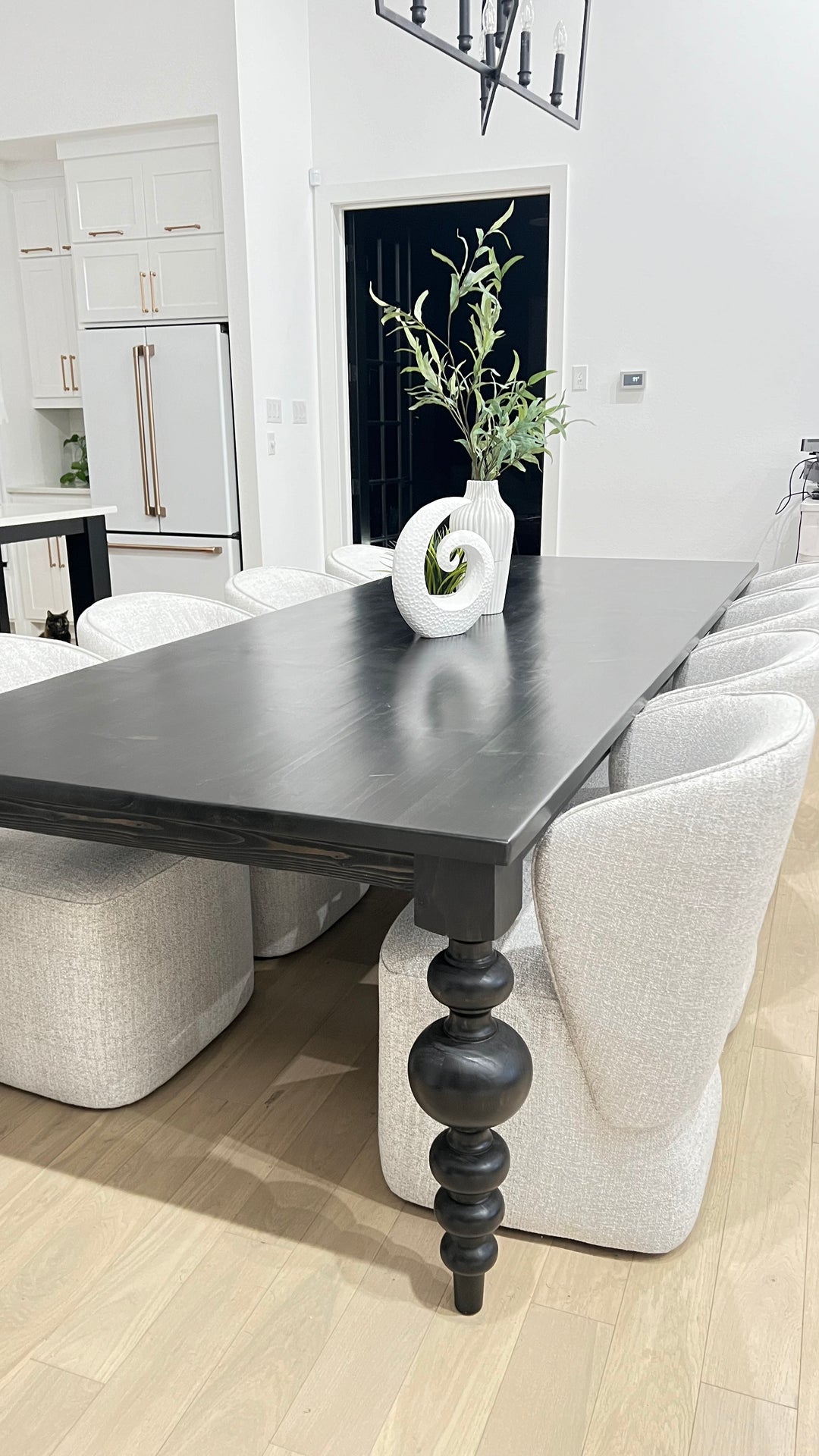From Conventional to Modern: Locate the Suitable Dining Area Table Legs for Your Style
While classic styles such as cabriole and transformed legs stimulate a sense of ageless refinement, contemporary styles like barrette and geometric alternatives present a chance for striking aesthetic passion. As you consider these aspects, the concern continues to be: how can you perfectly incorporate these varied leg designs to develop a harmonious dining experience?
Understanding Table Leg Styles
The range of dining-room table leg styles can substantially affect both the appearances and capability of the room. Each leg style contributes unique visual elements and practical features, accommodating diverse design preferences and use needs. Recognizing these designs is important for choosing the best table that aligns with your total indoor style vision.
For example, conical legs supply a tidy, traditional look that can improve a space's elegance, while stand bases supply stability and make best use of legroom, making them excellent for smaller rooms. Barrette legs, a trademark of mid-century modern layout, present an industrial panache, enabling an airy, open feel. In a similar way, trestle legs evoke rustic charm, supplying robust assistance and a sense of eternity.
Wood legs can bring warmth and structure, whereas steel options commonly share a sleek, contemporary ambiance. Ultimately, comprehending table leg designs is necessary for creating a cohesive eating location that mirrors personal style while guaranteeing usefulness and convenience.
Traditional Table Leg Options
When choosing dining-room table legs, traditional choices typically personify classic elegance and craftsmanship. These styles show an abundant heritage and a dedication to top quality, making them ideal for those who appreciate traditional appearances.
One of the most iconic conventional leg styles is the cabriole leg, defined by its stylish rounded shape. This style commonly includes ornamental makings and is most frequently located in Queen Anne and Chippendale furnishings. An additional preferred alternative is the turned leg, which flaunts a collection of smooth, rounded forms that give a timeless appearance while keeping stability.
Furthermore, the straight leg, while basic, supplies a basic and tough structure that can mix seamlessly with a selection of tabletop designs. For those drawn to ornate outlining, claw-and-ball feet legs evoke a feeling of magnificence and can act as a spectacular prime focus in any kind of dining room.
Last but not least, stand bases, although not strictly legs, offer an alternative traditional alternative that enables sufficient legroom and can be magnificently carved. Each of these traditional leg designs contributes to the overall setting of a dining room, weding function with visual allure.

Modern Table Leg Designs
Modern table leg layouts index use a diverse series of styles that stress tidy lines and ingenious products. These layouts commonly prioritize performance while acting as striking centerpieces within an eating area. Minimal aesthetic appeals are prevalent, with legs crafted from products such as steel, glass, and engineered timber, which contribute to a contemporary and ventilated feeling.
One popular layout is the barrette leg, defined by its slim, conical structure that supplies security without overwhelming the table top (dining room table legs). This design is typically located in mid-century modern furniture and can effortlessly match various dining table forms. An additional trend is using geometric shapes, where legs might handle angular or asymmetrical forms, adding aesthetic rate of interest and a touch of artistry

Blending Styles for One-of-a-kind Rooms
Often, homeowners look for to develop special eating areas that reflect their individual design by mixing different design elements. This approach permits for the unification of varied aesthetics, resulting in an unified yet unique atmosphere. Coupling a rustic wood table with sleek, modern-day steel legs can produce an eye-catching comparison that elevates the area's general appeal.
In addition, integrating vintage table legs with modern table tops can evoke a sense of background while maintaining a modern-day sensibility. Such combinations not just display private preference however also motivate creativity, permitting property owners to curate a space that feels both personal and welcoming.
Color plays an important duty in this blending procedure; choosing table legs that enhance or contrast with the existing color pattern can boost visual interest. As an example, whitewashed legs can soften the boldness of a dark table surface area, developing a balanced visual.
Tips for Selecting the Right Legs
Selecting the right table legs is necessary for accomplishing both performance and aesthetic charm in your eating area. Begin by thinking about the general design of your space. Traditional setups benefit from legs that include elaborate makings or transformed designs, while modern spaces may require sleek, minimal styles.
Next, assess the height and stability of the legs. dining room table legs. Standard table vary between 28 to 30 inches in height, so make sure the legs complement this measurement for convenience. Additionally, robust products, such as wood or steel, can improve security and longevity
Review the leg shape too-- options include right, tapered, or pedestal layouts. Straight legs provide a classic appearance, while tapered legs can include a touch of style. Pedestal bases offer enough legroom and are ideal for smaller sized areas.
Conclusion
In summary, picking the suitable dining room table legs calls for cautious consideration of both typical and contemporary styles. By harmonizing leg design, height, and product with the general décor, a natural and inviting atmosphere can be attained.
The variety of eating space table leg designs can substantially influence both the visual appeals and capability of the area. Ultimately, comprehending table leg styles is crucial for producing a natural dining location that reflects individual style while making sure practicality and convenience.One of the most iconic standard leg styles is the cabriole leg, defined by its graceful rounded form. Straight legs provide More Help a timeless look, while tapered legs can include a touch of elegance.In summary, picking the perfect eating area table legs requires cautious consideration of both contemporary and conventional designs.